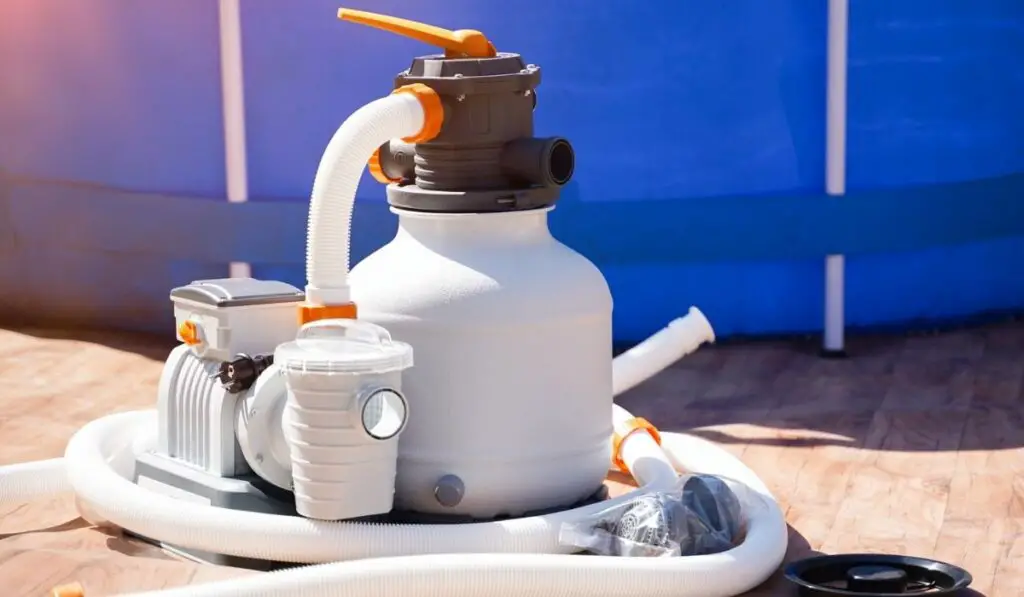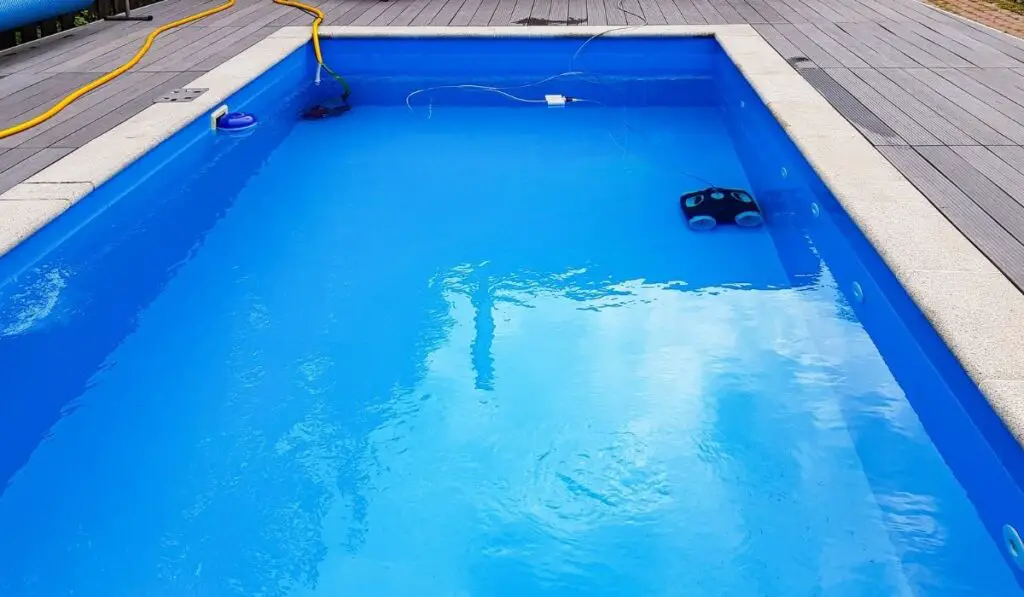Many new pool owners wonder when it’s best to run their pool pumps, especially if inclement weather is on the horizon. So, should the pump be running before, during, or after rainfall? Does the rain make any difference at all?
It’s generally beneficial to run your pool pump when it’s raining. However, it’s not a good idea to run a pool pump when it’s installed in an area that floods during rain. A pool pump can get damaged if it becomes submerged in water. Also, never run your pump when there’s a thunderstorm.
Pool pumps are designed to withstand a fair amount of water, so it’s usually okay to run one when it’s raining. Let’s take a closer look at why and when you’d want to run the pool pump as well as when not to.
Is It Safe to Run the Pool Pump in the Rain?

It’s perfectly safe to run a pool pump like the Intex 2100 GPH Pump With Sand Filter (on Amazon) in the rain. Pool pumps are designed so that they aren’t affected by rainfall. Most of the parts that rain could in theory affect have been waterproofed.
The only problem that can affect your pump is when you install it in a place with drainage problems. If the pump gets flooded, it could get damaged.
Even though the pump is mostly waterproof, it can’t survive totally under water. So if you’ve installed your pump in a place with poor drainage, you’ll have to unplug it before the rain starts falling.
Also, remember to switch it off at its breaker. After the rainfall, allow the pump to dry out before you switch it on again.
Before you operate your pump in the rain, check the manufacturer’s instructions. If the manufacturer declares that it’s safe to operate the pump in the rain, you can go ahead and do so, provided you have a good drainage channel.
However, if there’s a thunderstorm, you should unplug and switch off all electrical devices connected to the pool.
Why Run a Pool Pump During Rain?
Pool pumps are designed to operate in pretty much any weather conditions, unless there’s a thunderstorm, as we mentioned. During such a storm, lightning can strike the outside circuit and damage the pump and other devices.
There’s no need to worry about operating the pump in typical rainy weather; doing so actually has many benefits, including:
- The pump will ensure the rainwater mixes with the water already in the pool.
- The impurities in the pool will be filtered out.
- The pump removes and filters algae food (organic matter) hence controlling algae.
For you to enjoy these benefits, your pump should be operating optimally. You can take the following steps to care for the pump and the pool:
- Do not submerge the pump in water.
- If heavy rainfall is predicted, lower the water level in your pool to protect your pump against overflows.
- Clear all fallen leaves, debris, and other such elements from the pool. You can use a pool net (on Amazon) for this purpose.
- Top up chlorine (sanitizing chemical) when necessary.
- Check the pH level and adjust it accordingly.
- Make sure the skimmer baskets and pump strainer are clean.
Can a Pool Pump Get Wet?
A pool pump has two main parts: the hydraulic part and the electric motor. The pump converts electrical energy to mechanical energy that helps to push water through a rotating impeller.
The hydraulic part is also known as the “wet end” of the pump. It is the part through which water enters the pump before moving to the filter.
The pump is designed to work outdoors, meaning it will get wet from water splashes and rain, and this won’t affect its function. The pump can only get damaged if you allow water to pool around it or submerge it, especially if the water reaches the motor. A pool pump should never be submerged in standing water.
If, by accident, your pool pump gets waterlogged, you may have to replace it.
It’s advisable to run the pump daily when no one is in the pool (especially at night) to allow for proper filtration. If your pool gets a lot of use, you can run the pump for about 8 hours each day.
A pool pump is an important part of your pool, so you need to take good care of it as part of your usual pool maintenance routine.
Make sure it doesn’t get too dry by running it at least every once in a while; when water runs through it, it will help cool the pump’s internal components.
What to Do After It Stops Raining

There are several things you should do to your pool after it rains. This is because rain changes the chemistry of your pool, brings in debris, and increases water levels. Here are seven steps to take:
- Adjust the water level: If the water level is above where it should be, pump out the excess water.
- Turn on your filter system: Once you get the water level back to where it’s supposed to be, turn the filter system on to circulate the water.
- Shock your pool: Shocking the pool is meant to boost chlorine levels to help ward off contaminants. It’s best to shock the pool in dry weather.
- Skim off surface debris: If there are any floating objects on the water surface, you can use a skimmer to remove them.
- Brush the pool floor and vacuum it: rainwater deposits lots of debris at the bottom of the pool that should be removed. You can start by scrubbing the stairs and the walls to remove all contaminants. Next, hook a pool vacuum (on Amazon) to a skimmer and use it to clean the pool’s floor.
- Test the water: The pH should range between 7.4 and 7.6, and a good alkalinity ranges from 80 to 120 ppm. Calcium hardness levels should range from 100 to 300 ppm, while chlorine/sanitizer levels should range from 1 to 3 ppm.
- Adjust chemicals: After carrying out the chemical tests, you need to rebalance your water by adjusting the chemical levels until they fall within the recommended ranges.
